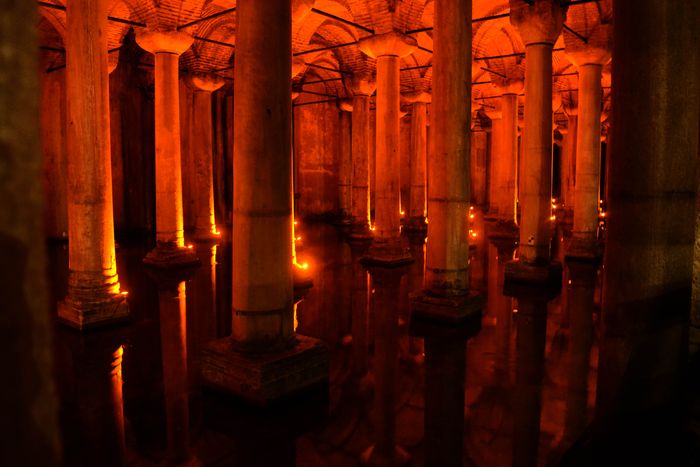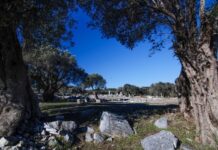And I have given him for his companion, Ooliab, the son of Achisamech, of the tribe of Dan. And I have put wisdom in the heart of every skilful man, that they may make all things which I have commanded thee.” (Ex. 31.1-6) And again: “Moses said to all the assembly of the children of Israel: This is the word the Lord hath commanded, saying: Set aside with you first fruits to the Lord.
Let every one that is willing and hath a ready heart, offer them to the Lord, gold, and silver, and brass, violet, and purple, and scarlet twice dyed, and fine linen, goat’s hair, and ram’s skins died red and violet, coloured skins, selim-wood, and oil to maintain lights and to make ointment, and most sweet incense, onyx stones, and precious stones for the adorning of the ephod and the rational. Whosoever of you is wise, let him come, and make that which the Lord hath commanded.” (Ex. 35.4-10) See you here the glorification of matter which you make inglorious. What is more insignificant than goat’s hair or colours?
Practise circumcision
Are not scarlet and purple and hyacinth colours? Now, consider the handiwork of man becoming the likeness of the cherubim. How, then, can you make the law a pretence for giving up what it orders? If you invoke it against images, you should keep the Sabbath, and practise circumcision. It is certain that “if you observe the law, Christ will not profit you. You who are justified in the law, you are fallen from grace.” (Gal. 5.2-4) Israel of old did not see God, but “we see the Lord’s glory face to face.” (IICor. 3.18)
We proclaim Him also by our senses on all sides, and we sanctify the noblest sense, which is that of sight. The image is a memorial, just what words are to a listening ear. What a book is to the literate, that an image is to the illiterate. The image speaks to the sight as words to the ear; it brings us understanding. Hence God ordered the ark to be made of imperishable wood, and to be gilded outside and in, and the tablets to be put in it, and the staff and the golden urn containing the manna, for a remembrance of the past and a type of the future.
Who can say these were not images and far-sounding heralds? And they did not hang on the walls of the tabernacle; but in sight of all the people who looked towards them, they were brought forward for the worship and adoration of God, who made use of them. It is evident that they were not worshipped for themselves, but that the people were led through them to remember past signs, and to worship the God of wonders. They were images to serve as recollections, not divine, but leading to divine things by divine power.
Read More about Apologia of St John Damascene Against those who Decry Holy Images Part 67








